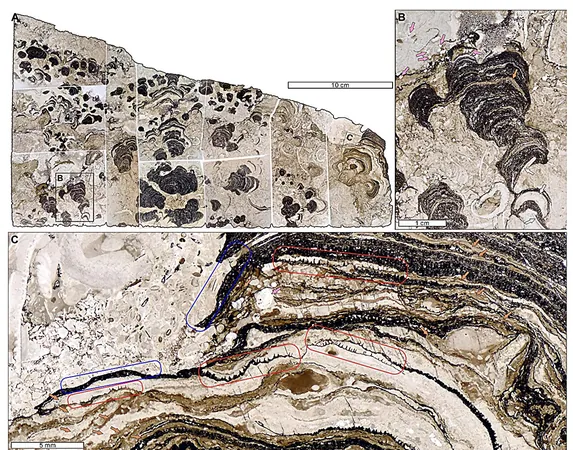
Groundbreaking Discovery: The Oldest Phosphatic Stromatoporoid Sponge Unveiled in South China!
2025-03-31
Author: Siti
Oldest Known Phosphatic Stromatoporoid Sponge
Scientists around the globe have made a groundbreaking discovery that could rewrite the history of marine life: the oldest known phosphatic stromatoporoid sponge, dating back an astonishing 480 million years to the Early Ordovician period, has been unearthed in South China!
Significance of Stromatoporoid Sponges
Stromatoporoid sponges were pivotal in shaping ancient reef ecosystems, akin to the role that modern corals play today. During the Paleozoic era, particularly in the middle Paleozoic (which spanned from the late Middle Ordovician to the Devonian), these sponges significantly contributed to the formation of biological frameworks—setting the stage for a major transition from microbial-dominated to skeletal-dominated reef habitats.
Challenging Historical Beliefs
Historically, scientists believed that stromatoporoid reefs sprang into existence abruptly during the late Darriwilian period, roughly 460 million years ago. This new discovery, however, raises eyebrows about the origins and early evolutionary lineage of these fascinating organisms.
The Discovery
The international research team, spearheaded by scientists from the esteemed Nanjing Institute of Geology and Paleontology under the Chinese Academy of Sciences, made a stunning find. They identified an exceptionally well-preserved phosphatic stromatoporoid sponge named *Lophiostroma leizunia* in Yuan'an, Yichang, South China. This remarkable sponge not only stretches the fossil record of stromatoporoid reefs back by an impressive 20 million years but also offers invaluable insights into the ancient biomineralization techniques employed by early marine life.
Publication of Findings
These findings have been detailed in a recent publication in the esteemed journal, Proceedings of the National Academy of Sciences.
Region of Discovery
South China has a rich reputation for its extraordinary fossil preservation and its flourishing Early Paleozoic marine ecosystems. Researchers have delved deeply into the Ordovician strata of this region, illuminating the early diversification of marine organisms during the Great Ordovician Biodiversification Event (GOBE)—a period that witnessed a remarkable surge in marine biodiversity.
Unique Construction of *Lophiostroma leizunia*
What sets *Lophiostroma leizunia* apart from all previously known sponges is its unique construction of a skeleton from fluorapatite, a type of phosphate mineral. This extraordinary finding positions the phylum Porifera (sponges) as the initial group of animals to harness all three principal biominerals: silica, calcium carbonate, and calcium phosphate. This unusual skeletal composition indicates that these ancient sponges possessed a genetic aptitude for employing diverse biomineralization strategies.
Contribution to Reef Structures
The fossil evidence suggests that *Lophiostroma leizunia* contributed substantially to complex reef structures, effectively binding together various components of the reef ecosystem, including calcimicrobes, lithistid sponges, Calathium, and echinoderms. These ancient reef environments showcase remarkable ecological complexity, rivaling that of contemporary reef systems.
Future Exploration
As the exploration of these ancient marine worlds continues, this discovery ignites excitement about the untapped secrets held within the geological records of South China, inviting scientists to further investigate the wonders of our planet’s deep history!
 Brasil (PT)
Brasil (PT)
 Canada (EN)
Canada (EN)
 Chile (ES)
Chile (ES)
 Česko (CS)
Česko (CS)
 대한민국 (KO)
대한민국 (KO)
 España (ES)
España (ES)
 France (FR)
France (FR)
 Hong Kong (EN)
Hong Kong (EN)
 Italia (IT)
Italia (IT)
 日本 (JA)
日本 (JA)
 Magyarország (HU)
Magyarország (HU)
 Norge (NO)
Norge (NO)
 Polska (PL)
Polska (PL)
 Schweiz (DE)
Schweiz (DE)
 Singapore (EN)
Singapore (EN)
 Sverige (SV)
Sverige (SV)
 Suomi (FI)
Suomi (FI)
 Türkiye (TR)
Türkiye (TR)
 الإمارات العربية المتحدة (AR)
الإمارات العربية المتحدة (AR)